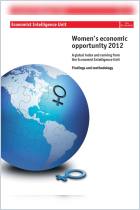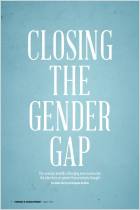Зарегистрируйтесь на getAbstract, чтобы получить доступ к этому краткому изложению.

Зарегистрируйтесь на getAbstract, чтобы получить доступ к этому краткому изложению.
Nazila Fathi
Bias and Barriers
Raising women’s labor force participation in the Arab world could boost economic growth, but there are deeply rooted obstacles
Finance & Development , 2017
Что внутри?
Low female labor participation casts an economic shadow over the Middle East and North Africa.
Recommendation
Despite some progress, the Arab Middle East and North Africa remain mired in traditional rules and attitudes that make it extraordinarily hard for women to get jobs or start their own businesses. In this compelling article, journalist Nazila Fathi recounts the disheartening stories of several highly educated and motivated women who, despite their achievements, find it nearly impossible to move up the economic ladder without a male backer. getAbstract recommends this important report to anyone interested in how gender issues affect a nation’s economic growth.
Summary
About the Author
Nazila Fathi is a former correspondent for The New York Times and the author of The Lonely War: One Woman’s Account of the Struggle for Modern Iran.




















Comment on this summary